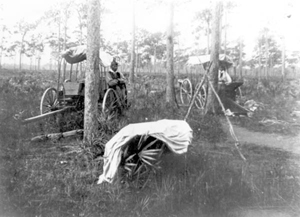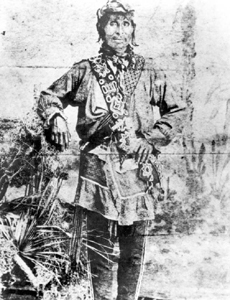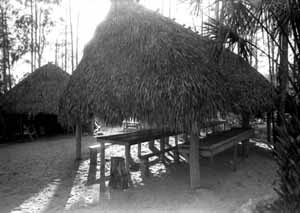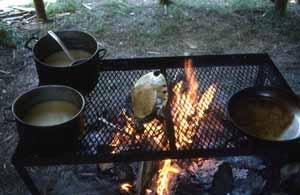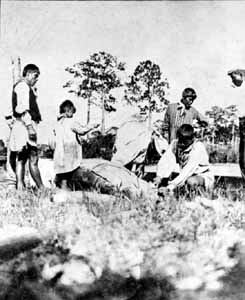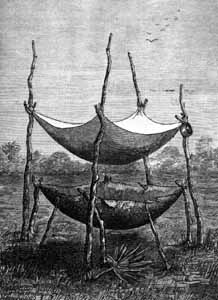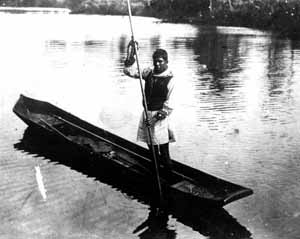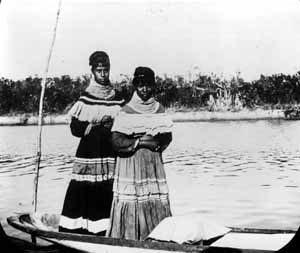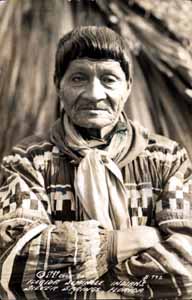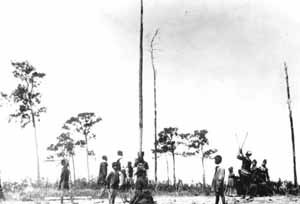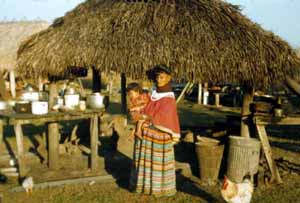Photo Exhibits
Photo exhibits spotlight various topics in Florida history, and are accompanied by brief text intended to place selected materials in historical context.
Images of Florida Seminoles in the Sunshine State
Isolation
While thousands were removed to the West, the remaining peoples survived in the southern-most portions of the state during an extended period of ISOLATION. It was during this period that they refined and fully adapted their culture to the South Florida environment.
Seminole man (1900s)
Image Number: PR04856
After the wars of the 1800s, the remaining Seminole peoples moved into the then-unpopulated South Florida, where they lived in relative isolation for several decades. Over the years, Seminoles adapted their culture to their South Florida surroundings.
Seminole family on the move (1900s)
Image Number: RC13339
Chief Tallahassee in Polk County (late 1800s)
Image Number: RC00971
Tallahassee was the head of a band of about thirty Seminole families who lived peacefully in Polk County from 1850 until the 1890s.
His clothing demonstrates the typical clothing style of Seminole men of authority in the late 1800s.
A Chickee, typical Seminole housing in South Florida: Big Cypress Seminole Indian Reservation (1985)
Image Number: FA0754
Because of the hot, humid weather of South Florida, Seminoles adapted their housing to the area, opting for an open air structure.
Demonstration of traditional Seminole food preparation: White Springs, Florida (1987)
Image Number: FS891094
Taken at the 1987 Florida Folk Festival, this image demonstrates the culinary adaptation of Seminole culture to South Florida.
Seminole family butchering a manatee for food (c. early 1900s)
Image Number: N033364
Drawing of a Seminole coontie strainer (1880s)
Image Number: PR04767
A starchy flour was made from the root of the tropical coontie plant (Zamia inegrifolia), first through grinding, then soaking, and finally straining.
The dried residue would be made into bread and other foods. The coontie can be found throughout South Florida, Cuba, and the Dominican Republic.
Typical Seminole dug-out canoe (1900s)
Image Number: RC13341
Seminole women in a dug-out canoe (1900s)
Image Number: RC04593
Elderly Seminole man: Silver Springs (1939)
Image Number: PC5708
Traditional Seminole ball game in South Florida: Pine Island, Florida (1900s)
Image Number: RC13324
Woman with child at the Dania Seminole Indian Reservation (1958)
Image Number: PE0990
Seminole traditions continued to be passed on from one generation to the next, ensuring Seminole culture would last well into the 20th century and beyond.

 Listen: The Assorted Selections Program
Listen: The Assorted Selections Program
